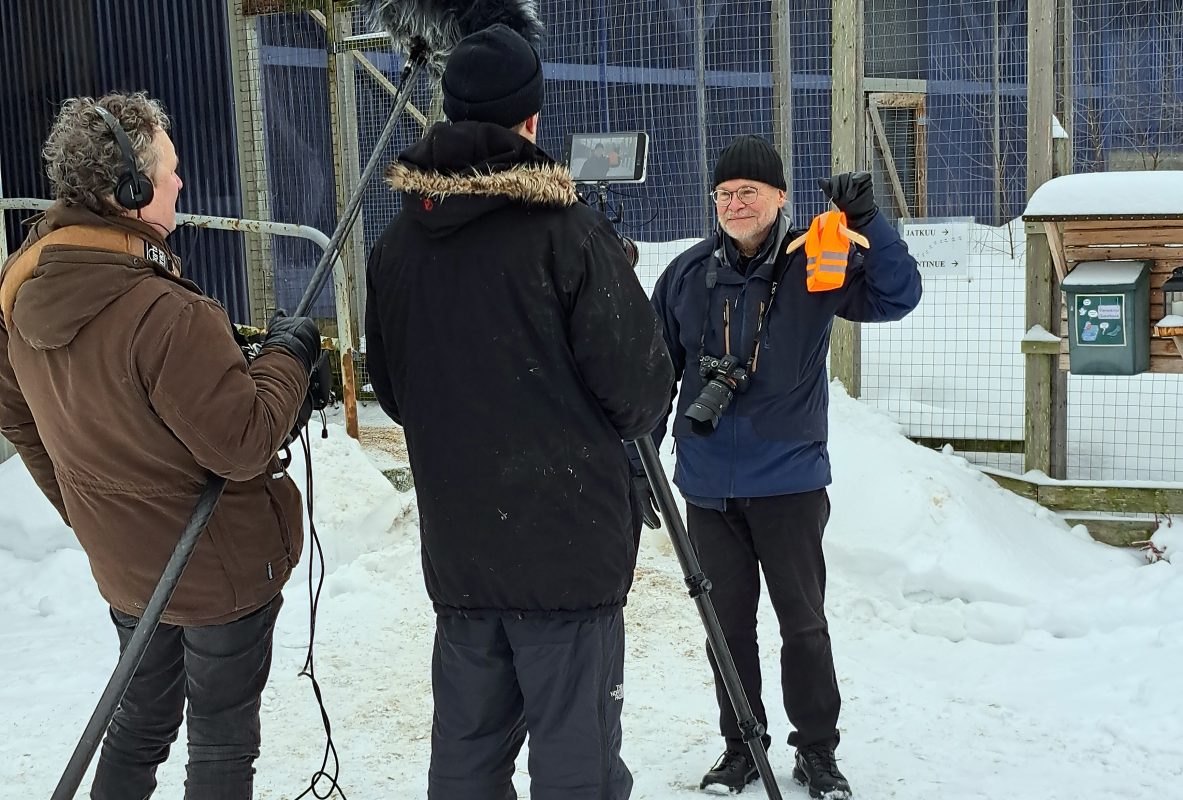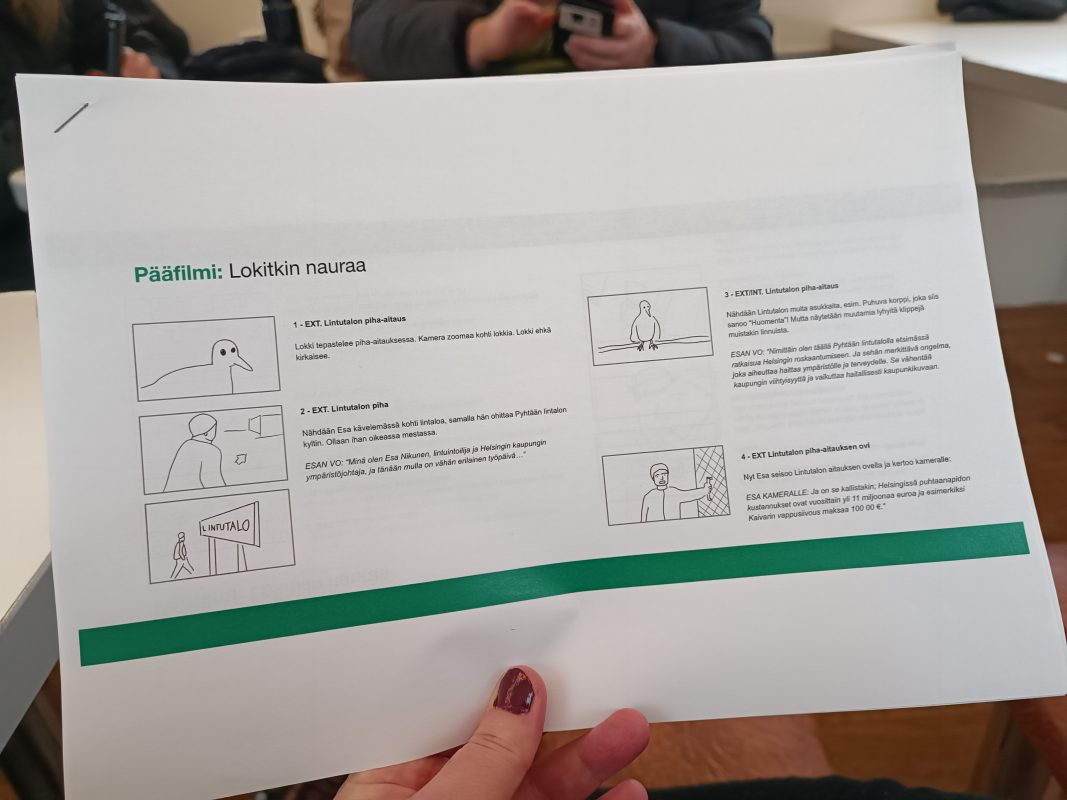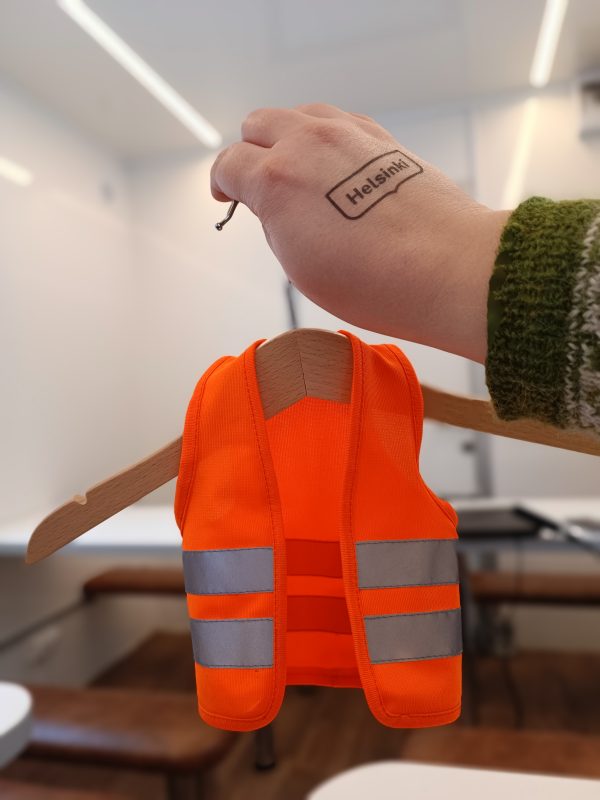Making of the seagull video – can you train a seagull to pick up litter?
It is morning in mid-February, and Pyhtää Bird Sanctuary is already bustling with activity, with the air filled with caws and calls. We have arrived at the sanctuary to film a documentary video for the Roskaton Helsinki (Litter-free Helsinki) communication campaign.

The video stars real seagulls, but since it is still winter, wild seagulls have not returned to Finland yet from their winter migration. Luckily we were able to find around ten gulls staying at the Pyhtää Bird Sanctuary, the primary purpose of which is to rehabilitate injured birds and release them back into the wild.
I almost can’t believe my ears when I hear someone shouting “huomenta!” (Finnish for “good morning!”) at me and find out that that “someone” was a raven, one of the longer-term residents of the sanctuary, who has learned to greet visitors. In the next room, the manager of the Pyhtää Bird Sanctuary, Esa Hokkanen, is preparing breakfast for the birds. He is assisted by his daughter, who has followed in her father’s footsteps as a bird rescuer.
The filming takes place in a large outdoor bird enclosure. Out of several seagulls, two birds step in front of the camera: Börje and Tuula. Tuula, who is a small but feisty common gull, is clearly the one in charge. Börje, on the other hand, is a calmer and larger herring gull.
To avoid causing any unnecessary stress or discomfort for the gulls, the filming crew inside the enclosure is kept small, consisting of only the cameraman, camera assistant and audio technician. Instead of David Attenborough, the role of narrator and trainer is filled once again by the City of Helsinki’s Head of Environmental Affairs Esa Nikunen, who is assisted by Esa Hokkanen from the sanctuary. The rest of us get to watch the filming via a monitor inside our trailer.


Successful training or illusion?
Gulls are smart birds, but training them to pick up litter in a short span of time is not an easy challenge. Before the filming, we were assisted by experienced animal trainer, who introduced the gulls to the small waste bin and litter appearing on the video prior to the filming. The 10-centimetre-tall waste bins were loaded with treats for the gulls, who then proceeded to retrieve them. The idea was for the gulls to also learn how to pick up litter, but this proved to be slightly too ambitious a goal in the time we had available – as a result, we settled for filming the gulls’ antics and using the magic of editing to play some of the footage in reverse order as to create the illusion that they were picking up litter.
I do believe, however, that had we had more time to train them, the gulls would have actually learned to pick up litter. After all, we even had a high visibility vest made for them to serve as a work uniform. In reality the vest was just a prop for the video that was never intended to be worn by the gulls.

Gulls are no litterbugs
Although gulls are often labelled as litterbugs, the ones featured on the video proved to be very sympathetic, with distinct personalities. The reason why gulls were chosen as the stars of the campaign is precisely because they are often associated with littering. Of course the actual litterbugs are not gulls, but us people. That is why our campaign features gulls humorously ranting and roasting people about litter and dropping some hard facts about the impacts and costs of littering – did you know, for example, that sanitation in Helsinki cost EUR 14 million of taxpayer money last year?
Börje and Tuula have also been immortalised as mascot costumes. You will be able to meet our mascots at least on May Day in Kaivopuisto and at The Tall Ships Races in July. I can reveal that I myself will be participating at least in the May Day festivities to remind people about the harmfulness of littering – don’t litter or even the gulls will laugh at you!
Watch the finished video on the Urban Environment Division’s YouTube channel.
Teina Ryynänen. The writer works for the communications services of the City of Helsinki’s Urban Environment Division.